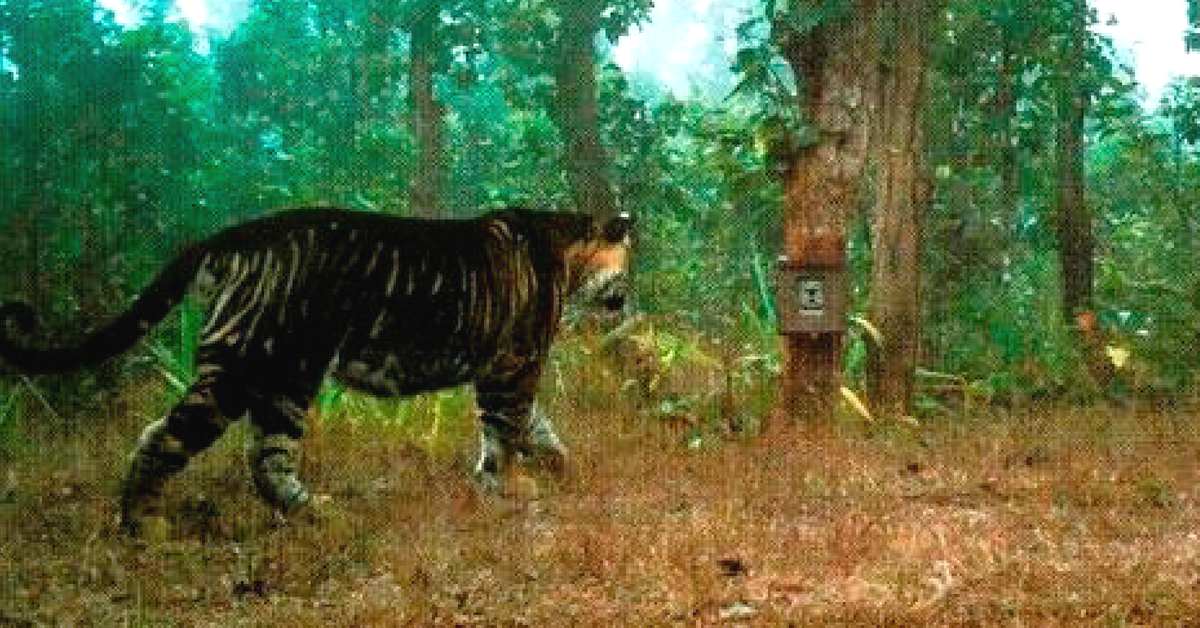In April 2018, Chhattisgarh reported a sighting of a black panther after 24 years, bringing immense joy to wildlife enthusiasts.
What is a black panther? How did it come to Chhattisgarh and what does it mean for the black panther population in the state? You can find out all about it in our story here.
Recently, the Odisha Forest Department also spotted a black panther in the Sundergarh forest, which makes it probably the only state in India which is home to both black panthers and black tigers!
We are all familiar with the Bengal tiger, the magnificent beast which prowls the land in search of prey; the soundless feline who hides from you even in plain sight.
But what about the black tiger, which is lesser known or spoken about than the Bengal tiger or even the white tiger?

Found only in Odisha, the numbers of the black tiger do not look too good. Back in 2006, the state housed about 45, and 2015, the count was down to 28.
What does it mean for the black tiger population in Odisha? Is the species on the verge of extinction, and if so, why are we not panicking yet?
Well, we may not have all the answers, but here are some facts that will help you understand the situation of black tigers in the wild a little better.
Black tigers are not a separate species or sub-species of tigers. They are a distinct colour variant of the Bengal tiger, and their all-black colour is due to a melanistic pigmentation.
Due to this pseudo-melanism, their black stripes are so close that the orange background is hardly seen, and this is why they appear as ‘black.’ This rare occurrence seems to be getting increasingly common in Odisha, presumably due to inbreeding.
Black tigers have even been reported to have smaller bodies than regular tigers, probably because of inbreeding. But this is not to say that these tigers are weak and cannot survive as well as the Bengal tiger. In fact, they have existed in the jungles of Odisha since the 1990s, and that is when the reports of their existence came in.
We can never say for sure that they did not exist before they were reported, because in the wild, the lack of evidence, does not necessarily translate to the lack of existence.
Living exclusively in the jungles of Odisha, black tigers have a gene pool of their own. Although they are not a separate species, a reduction in their numbers cannot be brushed off as unimportant, and it is certainly essential to bring their conservation under the spotlight.
You may also like: Wild Animals Aren’t Entertainment: Meet the Amazing Folks Saving Bears & Elephants
The jungles of India are filled with unusual variations of animals. The black panther, arguably one of the sleekest looking felines, the black tiger, which may have an additional advantage at night, and the white tiger, are just some examples of these beautiful variations. It is up to us to be updated about these animals and strive for their survival in the wild.
(Edited by Gayatri Mishra)
Like this story? Or have something to share?
Write to us: contact@thebetterindia.com
Connect with us on Facebook and Twitter.
NEW: Click here to get positive news on WhatsApp!
If you found our story insightful, informative, or even just enjoyable, we invite you to consider making a voluntary payment to support the work we do at The Better India. Your contribution helps us continue producing quality content that educates, inspires, and drives positive change.
Choose one of the payment options below for your contribution-
By paying for the stories you value, you directly contribute to sustaining our efforts focused on making a difference in the world. Together, let's ensure that impactful stories continue to be told and shared, enriching lives and communities alike.
Thank you for your support. Here are some frequently asked questions you might find helpful to know why you are contributing?
